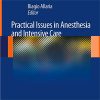Long-Term Implications of Abnormal Left Ventricular Strain During Sepsis
journals.lww.com
Among patients with sepsis and pre-existing cardiac disease who survived to ICU discharge, left ventricular global longitudinal systolic strain demonstrated a U-shaped association with cardiovascular outcomes through 24 months. The relationship was especially strong among younger patients with more comorbidities. These observations are likely of use to design of future trials.
Left ventricular global longitudinal systolic strain was our primary measure of septic cardiomyopathy.
We employed a suite of multivariable survival analyses to explore linear and nonlinear associations between left ventricular global longitudinal systolic strain and major adverse cardiovascular events, which included death, stroke, and myocardial infarction. Our primary outcome was major adverse cardiovascular event through 24 months after ICU discharge.
Among 290 study patients, median left ventricular global longitudinal systolic strain was –16.8% (interquartile range, –20.4% to –12.6%), and 38.3% of patients (n = 111) experienced a major adverse cardiovascular event within 24 months after discharge. On our primary, linear analysis, there was a trend (p = 0.08) toward association between left ventricular global longitudinal systolic strain and major adverse cardiovascular event (odds ratio, 1.03; CI, < 1 to 1.07).



















